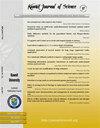用回归-指数型估计器进行新的综合均值估计:在中性数据中的应用
IF 1.2
4区 综合性期刊
Q3 MULTIDISCIPLINARY SCIENCES
引用次数: 0
摘要
当点估计器用于估计总体参数时,它提供单个值。在这种情况下,嗜中性方法有利于估计抽样理论中感兴趣的参数,因为它产生参数值主要来源的区间估计。中性统计学侧重于不确定或不精确的数据。在本文中,我们提出了一种新的增强的嗜中性估计器来估计总体均值。性质(偏差和均方误差)是由一阶近似导出的。建议的估计器在处理不确定、不清楚、中性型数据时是有用的。对于这些理想值,确定了表征常数的定义标量的最佳可能值和建议估计量的最小嗜中性均方误差(MSE)。中性估计器优于经典估计器,因为在估计总体平均值时,现有的估计区间包含了最小的MSE。我们使用了模拟研究和伊斯兰堡证券交易所的真实数据集。参数和估计器组合的变化反映在MSE值中。从数值结果可以看出,Y - PN、Y - SKN和Y - AN的估计量的MSE值要高得多,说明估计误差更大。估计器Y = φ GPi (i = 1、2、3、4和5)在相对最小的MSE值下显示出较好的精度性能。数值结果表明,与现有的估计器相比,所建议的估计器具有良好的性能。本文章由计算机程序翻译,如有差异,请以英文原文为准。
New comprehensive mean estimation using regression-cum-exponential type estimator: Application with neutrosophic data
When the point estimator is used to estimate population parameters, it provides a single value. In such a scenario, the neutrosophic method is beneficial for estimating the parameters of interest in sampling theory as it yields interval estimates where the parameter value mainly originates. Neutrosophic statistics focuses on uncertain or imprecise data. In this article, we suggest a new enhanced neutrosophic class of estimators to estimate the population mean. The properties (bias and mean squared error) are derived from the first-degree approximation. The suggested estimators are useful when working with uncertain, unclear, neutrosophic-type data. The best possible values of the defining scalars characterizing constants and the minimum neutrosophic mean squared error (MSE) for the suggested estimators are determined for these ideal values. Neutrosophic estimators outperform their classical counterparts because the existing estimated interval includes the minimum MSE when estimating the population mean. We use a simulation study and a real dataset from the Islamabad Stock Exchange. Variations in parameter and estimator combinations are reflected in the MSE values. From the numerical results, the estimators , , and have substantially higher MSE values, suggesting more significant estimation error. The estimators (i = 1, 2, 3, 4, and 5) show better accuracy performance with relatively minimum MSE values. The numerical outcome shows that the suggested classes of estimators perform well as compared to the existing estimators.
求助全文
通过发布文献求助,成功后即可免费获取论文全文。
去求助
来源期刊

Kuwait Journal of Science
MULTIDISCIPLINARY SCIENCES-
CiteScore
1.60
自引率
28.60%
发文量
132
期刊介绍:
Kuwait Journal of Science (KJS) is indexed and abstracted by major publishing houses such as Chemical Abstract, Science Citation Index, Current contents, Mathematics Abstract, Micribiological Abstracts etc. KJS publishes peer-review articles in various fields of Science including Mathematics, Computer Science, Physics, Statistics, Biology, Chemistry and Earth & Environmental Sciences. In addition, it also aims to bring the results of scientific research carried out under a variety of intellectual traditions and organizations to the attention of specialized scholarly readership. As such, the publisher expects the submission of original manuscripts which contain analysis and solutions about important theoretical, empirical and normative issues.
 求助内容:
求助内容: 应助结果提醒方式:
应助结果提醒方式:


